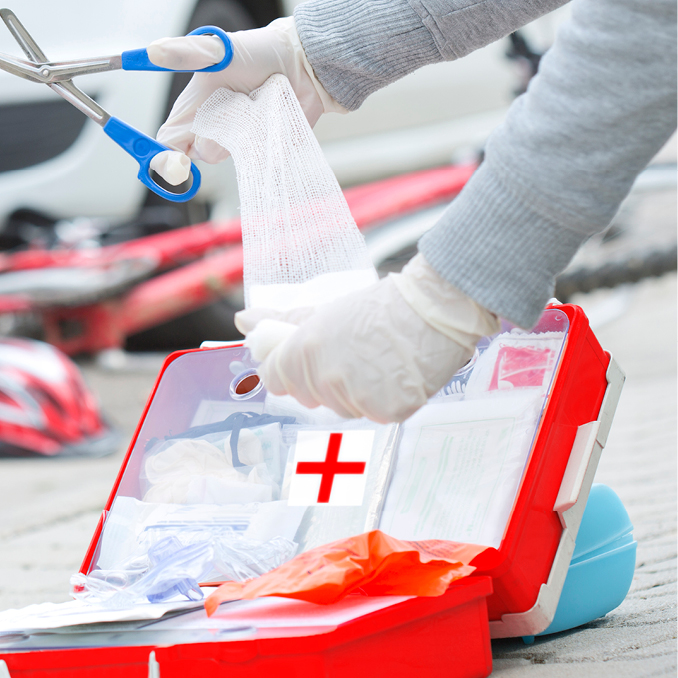Franciscan at Work in the Community
The Franciscan Health Foundation started the Community Health and Wellness Fund in late 2019 to help support programs that assist the most vulnerable populations in our communities by addressing economic stability, quality education and healthcare access. Numerous initiatives currently receive funding and offer vital services for those who can best benefit from them. Here we profile one of these essential programs with perspectives from one of our educators who knows this program best.
Helping to Stop the Bleed
Jennifer Homan, RN, MSN, knows first-hand what happens when an injury causes rapid bleeding. As manager of Trauma Services at Franciscan Health Crown Point, she has seen all manner of traumatic injuries and participated in emergency, life-saving interventions. She knows the leading cause of preventable death after injury is bleeding.
That’s why she is the ideal representative of Franciscan Health Crown Point’s participation in the Stop the Bleed program to teach community members how to respond in the case of a traumatic bleeding injury. Stop the Bleed was created as a response to the spate of mass shootings in the United States, in particular the Sandy Hook Elementary School shooting in 2012.
The program aims to teach bystanders the basic first aid actions that can help save a life and to encourage the availability of bleed kits used in a first aid situation. Bleed kits contain a military-grade tourniquet, gauze, scissors, medical gloves and instructions. Homan expects that, eventually, the bleed kit will be as common in public places as portable defibrillators. And as more organizations learn about the value of field treatment for bleeding wounds, they will acquire their own bleed kits.
“Traumatic injuries can happen anywhere – car accidents, farming mishaps, falls, accidents with tools and heavy machinery, and yes, bullet wounds,” Homan said. “We know that if we can get into the community and teach adults how to stem the flow of blood in these emergency situations, and if they have the tools available to them to act, they can make a difference between life and death.”
So far Homan has presented to such groups as teachers, staff at the Crown Point YMCA, foster care parent groups, and the local Farm Bureau. The emphasis is on training adults, but Homan says younger people also could learn the necessary skills.
The curriculum centers around the ABCs of bleeding control:
- Alert 911
- Bleeding – Find the source of the bleeding
- Compress – Use direct pressure to limit bleeding
Students learn how to pack a wound and apply a tourniquet properly. They practice their skills on a mannequin of a human limb under Homan’s guidance.
“Learning to determine the severity of bleeding is critical,” Homan said. “Are there pools of blood? Is there continuous bleeding? There is some discomfort and students may reasonably feel queasy or anxious. But they come away from training more confident that they know what to do to effectively render aid.
“Thanks to extensive education over the years, most people are comfortable with the idea of using CPR to help a person. We hope to eventually achieve the same level of awareness and comfort with a traumatic bleeding injury.”
Your gift to our Community Health & Wellness Fund helps support programs like Stop the Bleed.

